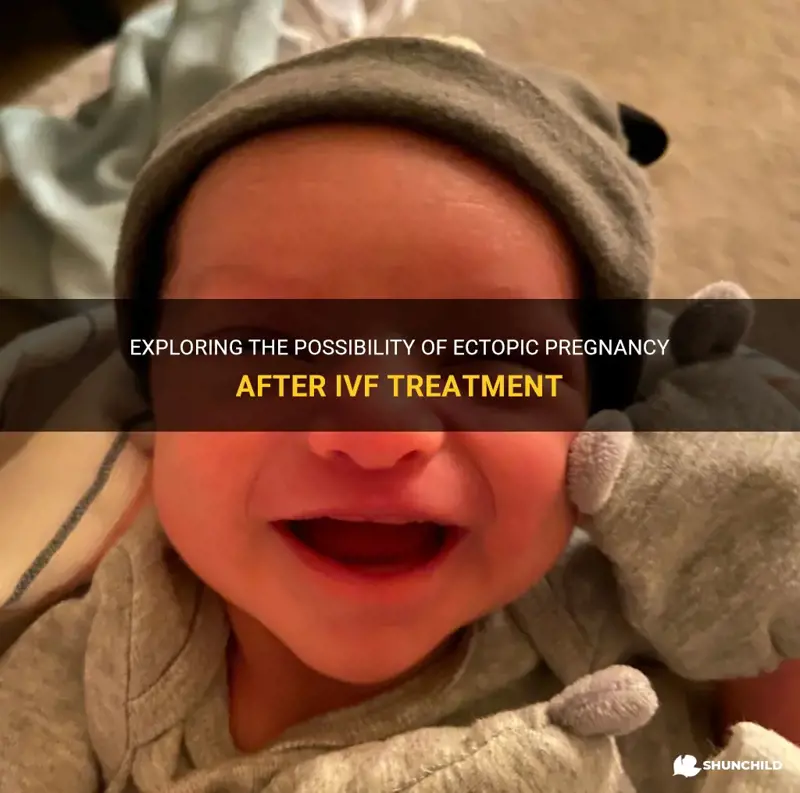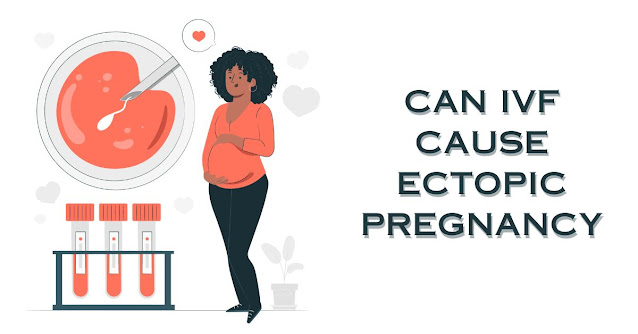Can You Have an Ectopic Pregnancy with IVF?
When you’re dreaming of starting a family, in vitro fertilization (IVF) can feel like a beacon of hope. It’s a process that’s helped millions of people welcome babies into their lives. But alongside the excitement, there’s often a swirl of questions and worries. One that pops up a lot is: Can you still have an ectopic pregnancy with IVF? The short answer is yes, it’s possible—and it’s something worth understanding if you’re on this journey or supporting someone who is.
Ectopic pregnancies happen when a fertilized egg implants somewhere outside the uterus, usually in a fallopian tube. With IVF, doctors place the embryo directly into the uterus, so it might seem like ectopic pregnancies wouldn’t be a concern. Yet, they still happen, and the reasons why are fascinating, a little surprising, and definitely worth digging into. This article is here to walk you through it all—how it happens, what raises the odds, the latest research, and practical tips to keep in mind. Let’s dive in and unpack this together.
What Is an Ectopic Pregnancy, Anyway?
An ectopic pregnancy isn’t your typical pregnancy. Normally, a fertilized egg travels down the fallopian tube and settles into the uterus, where it grows into a baby. But in an ectopic pregnancy, that egg gets stuck or implants somewhere else—most often in the fallopian tube (about 90% of cases), though it can also land in the ovary, cervix, or even the abdomen. It’s rare, happening in about 1-2% of natural pregnancies, but it’s serious because that little embryo can’t grow properly outside the uterus. If it keeps growing, it could cause pain, bleeding, or even a rupture, which is a medical emergency.
With IVF, the process skips the fallopian tubes entirely. Doctors fertilize the egg in a lab and transfer the embryo straight into the uterus. So, you might wonder, how could it end up somewhere else? Turns out, the body has a way of surprising us, and there are a few quirks that can lead to an ectopic pregnancy even with this high-tech help.
How Does an Ectopic Pregnancy Happen with IVF?
You’d think IVF would make ectopic pregnancies impossible since the embryo is placed right where it needs to be. But here’s the catch: embryos can move. After the transfer, that tiny bundle of cells isn’t glued in place—it’s free to float a bit. Sometimes, it drifts out of the uterus and into a fallopian tube or another spot. Researchers call this “embryo migration,” and it’s one of the big reasons ectopic pregnancies still happen with IVF.
Another possibility? The embryo might not be perfectly positioned during the transfer. If it’s placed too close to the edge of the uterus or accidentally nudged into a tube, it could settle there instead. And then there’s the body itself—things like inflammation, scarring, or unusual contractions in the uterus might push or pull the embryo off course.
Studies show that ectopic pregnancies occur in about 1.4% to 5.4% of IVF pregnancies—higher than the rate for natural conceptions. Why the uptick? It’s tied to a mix of factors, from the IVF process to the reasons someone needed IVF in the first place. Let’s break it down further.
Why Are Ectopic Pregnancies More Common with IVF?
IVF is a game-changer, but it doesn’t erase every risk. Here’s what’s going on behind the scenes that can nudge the odds of an ectopic pregnancy higher.
The Role of Fallopian Tubes (Even When They’re Not in Play)
If you’re doing IVF, chances are you’ve had some fertility challenges—maybe blocked or damaged fallopian tubes. Those tubes don’t just disappear during IVF; they’re still there, and if they’re scarred or sticky from past infections (like chlamydia) or surgeries, they can trap a wandering embryo. One study found that women with tubal issues were up to three times more likely to have an ectopic pregnancy after IVF compared to those without.
Hormones and Stimulation
IVF involves a cocktail of hormones to boost egg production. That revs up your reproductive system, which is great for making embryos but can also mess with how your uterus and tubes behave. Some research suggests that high hormone levels might cause stronger uterine contractions, potentially pushing an embryo out of place.
Transfer Techniques
How the embryo is transferred matters. Doctors use a thin catheter to place it in the uterus, aiming for the sweet spot. But if too much fluid is used, or if the embryo is placed too high or too low, it might not stay put. A 2023 study noted that transfers closer to the top of the uterus (near the tubes) were linked to a slight bump in ectopic risk.
Multiple Embryos
In the early days of IVF, doctors often transferred more than one embryo to boost the chances of success. Problem is, more embryos can mean more chances for one to go astray. While single embryo transfers are more common now, the risk hasn’t vanished entirely.
Your Unique Body
Everyone’s different. If you’ve had an ectopic pregnancy before, your odds might be higher with IVF. Same goes for things like endometriosis or smoking, which can affect how your reproductive system works. It’s not just the IVF—it’s how it interacts with you.
What Does the Latest Research Say?
Science is always digging deeper, and recent studies have shed new light on ectopic pregnancies with IVF. Here’s what’s fresh as of March 2025:
- Frozen vs. Fresh Transfers: A 2024 study found that frozen embryo transfers (where embryos are thawed and transferred later) might have a slightly lower ectopic rate—around 2%—compared to fresh transfers (about 2.5-3%). Why? Frozen cycles give your body a break from hormone overload, which could stabilize things.
- Blastocyst Transfers: Doctors often wait until an embryo reaches the blastocyst stage (day 5 or 6) before transferring it, since it’s more developed. A 2023 meta-analysis showed these transfers cut ectopic risk a bit compared to earlier-stage transfers (day 3), possibly because blastocysts are less likely to wander.
- Endometrial Thickness: Your uterine lining plays a role. Research from 2022 linked thinner linings (under 8 mm) on transfer day to a higher chance of ectopic pregnancy. A thicker, cozier lining seems to keep embryos where they belong.
- Age Factor: Older moms-to-be (over 35) might face a higher risk, according to a 2024 UK study of 160,000 IVF pregnancies. It’s not huge, but age-related changes in the tubes or uterus could be at play.
These findings are shaping how doctors approach IVF today, tweaking techniques to lower risks while keeping success rates high.
Signs to Watch For
Ectopic pregnancies can be sneaky, especially with IVF, since you’re already on high alert for every little twinge. Early on, it might feel like a normal pregnancy—missed period, tender breasts, maybe some nausea. But then things can shift. Here’s what to keep an eye on:
- Pain: Sharp or crampy pain in your lower belly, often on one side, that doesn’t go away.
- Bleeding: Light spotting or heavier vaginal bleeding that’s not like your usual period.
- Shoulder Pain: Sounds weird, right? It’s a red flag if a tube ruptures, causing internal bleeding that irritates nerves up top.
- Dizziness or Fainting: A sign of serious trouble, like blood loss.
If you’re post-IVF and notice these, call your doctor ASAP. They’ll likely check your hormone levels (hCG) and do an ultrasound to see what’s up.
Quick Quiz: Could It Be Ectopic?
Take a sec to think about your symptoms. Answer these with a yes or no:
- Are you having one-sided belly pain that’s getting worse?
- Have you noticed any unusual bleeding since your embryo transfer?
- Do you feel lightheaded or super tired for no reason?
If you said yes to any, don’t wait—reach out to your care team. Better safe than sorry!
How Doctors Catch It Early
Good news: IVF means you’re closely monitored. After the transfer, your clinic tracks your hCG levels (a pregnancy hormone) with blood tests. In a healthy pregnancy, hCG doubles every 48 hours or so. If it’s rising slowly or plateauing, that’s a clue something might be off. Pair that with an ultrasound around week 5 or 6, and doctors can spot if the embryo’s in the wrong place.
Here’s a peek at the process:
- Blood Test: Checks hCG levels a week or two after transfer.
- Ultrasound: Looks for a gestational sac in the uterus. No sac? They’ll scan the tubes and beyond.
- Follow-Up: If anything’s unclear, they’ll keep testing until they’re sure.
This tight watch means ectopic pregnancies are often caught earlier with IVF than with natural conception, which can make a big difference.

Treatment Options: What Happens Next?
If an ectopic pregnancy is confirmed, it can’t stay where it is—it won’t grow into a baby, and it could harm you. Treatment depends on how far along it is and your symptoms. Here’s what might happen:
Medication
- What It Is: A drug called methotrexate stops the embryo from growing, letting your body absorb it over time.
- When It Works: Best for early cases with low hCG levels and no rupture.
- Pros: No surgery, keeps your tubes intact.
- Cons: You’ll need follow-ups to confirm it worked, and it’s not safe if you’re breastfeeding.
Surgery
- What It Is: Usually a laparoscopy (small incisions, quick recovery) to remove the ectopic tissue. In emergencies, it might be open surgery.
- When It’s Needed: If there’s a rupture, heavy bleeding, or the embryo’s too big for meds.
- Pros: Fast and definitive.
- Cons: Might involve removing a tube, though fertility docs try to avoid that.
Watchful Waiting
- What It Is: If hCG is dropping on its own and you’re stable, doctors might just monitor you.
- When It’s Okay: Rare, but possible with tiny, symptom-free cases.
Your doctor will tailor this to you, balancing safety with your future fertility goals.

Can You Lower the Risk?
While you can’t control everything, there are steps to tilt the odds in your favor. Some are in your hands, others depend on your IVF team. Here’s how to play it smart:
✔️ Pick a Skilled Clinic: Experience matters. Clinics with lower ectopic rates often nail the transfer technique—ask about their stats!
✔️ Single Embryo Transfer: Fewer embryos, less chance of one going rogue. It’s the gold standard now for a reason.
✔️ Quit Smoking: It’s tough, but smoking ups ectopic risk by messing with tube function. Support groups or patches can help.
✔️ Talk Tubal Health: If you’ve had tube issues, ask if surgery (like removing a damaged tube) makes sense before IVF.
❌ Don’t Skip Checkups: Those early blood tests and scans? They’re your safety net—keep every appointment.
Your IVF Risk Checklist
Grab a pen and check off what applies to you:
- I’ve had an ectopic pregnancy before.
- My tubes have scarring or damage.
- I smoke or used to.
- I’m over 35.
More checks might mean a chat with your doctor about extra precautions. No shame—it’s all about being proactive!
The Emotional Side: Coping with an Ectopic Pregnancy
Finding out your IVF pregnancy is ectopic can hit hard. You’ve poured time, money, and heart into this, and now it’s a loss—and maybe a scare. It’s okay to feel crushed, angry, or just numb. Here’s how to navigate it:
- Give Yourself Grace: Cry if you need to. Talk to a friend or therapist. This isn’t “just” a setback—it’s real grief.
- Lean on Your Team: Your fertility clinic isn’t just for medical stuff—they’ve seen this before and can guide you emotionally, too.
- Look Ahead: Studies show most women who’ve had an ectopic with IVF go on to have healthy pregnancies later. It’s not the end of your story.
One woman I heard about, let’s call her Sarah, had an ectopic after her second IVF round. She was devastated but took a break, healed her body and mind, and tried again. Her third transfer brought a bouncing baby girl. It’s not a guarantee, but it’s a reminder hope isn’t lost.

3 Things You Haven’t Heard About Ectopic Pregnancies with IVF
The top articles out there cover the basics, but here are some angles they often skip—fresh insights to round out your picture.
1. The Heterotopic Twist
Ever heard of a heterotopic pregnancy? It’s when you’ve got two pregnancies—one in the uterus, one ectopic. It’s super rare naturally (1 in 30,000), but with IVF, it jumps to 1 in 100. Why? Multiple embryos and hormone changes make it more likely. Doctors might miss it because they see a healthy uterine pregnancy and stop looking. If you’re having twins or more, extra ultrasounds could catch this sneaky double act.
2. The Microbiome Connection
Your gut and vaginal bacteria might play a role. A 2024 study hinted that imbalances in your microbiome could tweak inflammation or tube health, nudging embryos off course. It’s early days, but eating probiotic-rich foods (like yogurt or kefir) or asking your doc about microbiome testing could be a future frontier.
3. Stress and the Uterus
No one talks about this much, but stress might matter. Chronic anxiety pumps cortisol, which some researchers think could mess with uterine contractions post-transfer. A small 2023 survey of 500 IVF patients found those with high stress scores had a 20% higher ectopic rate. Meditation or yoga won’t fix everything, but they might calm your body enough to help.
What’s Your Next Step?
If you’re pre-IVF, chat with your doctor about your risks—your history, your tubes, your plan. During IVF, stay curious—ask where they’re placing that embryo and why. Post-transfer, track how you feel and don’t brush off weird symptoms. Knowledge is power here.
And if you’ve been through an ectopic pregnancy with IVF, you’re not alone. It’s a bump, not a dead end. Most clinics report that over 70% of women try again and succeed within a few cycles. Your body’s resilient, and science keeps getting better.

Poll: What’s on Your Mind?
Pick one and let us know in the comments:
- I’m worried about ectopic risks with IVF—how do I talk to my doctor?
- I’ve had an ectopic—what’s next for me?
- I just want to know more about staying healthy during IVF.
Your input helps us tailor more articles like this!
Wrapping It Up
Yes, you can have an ectopic pregnancy with IVF—it’s rare but real, hovering around 2-5% of cases. It’s tied to tube health, transfer quirks, and sometimes just plain biology doing its thing. But here’s the flip side: IVF’s close monitoring means it’s often caught early, and new tweaks (like frozen transfers or better placement) are nudging risks down. You’ve got tools—awareness, a solid clinic, and your own gut instincts—to stay ahead of it.
This journey’s full of twists, but you’re tougher than you think. Got questions or a story to share? Drop it below—we’re all in this together.


